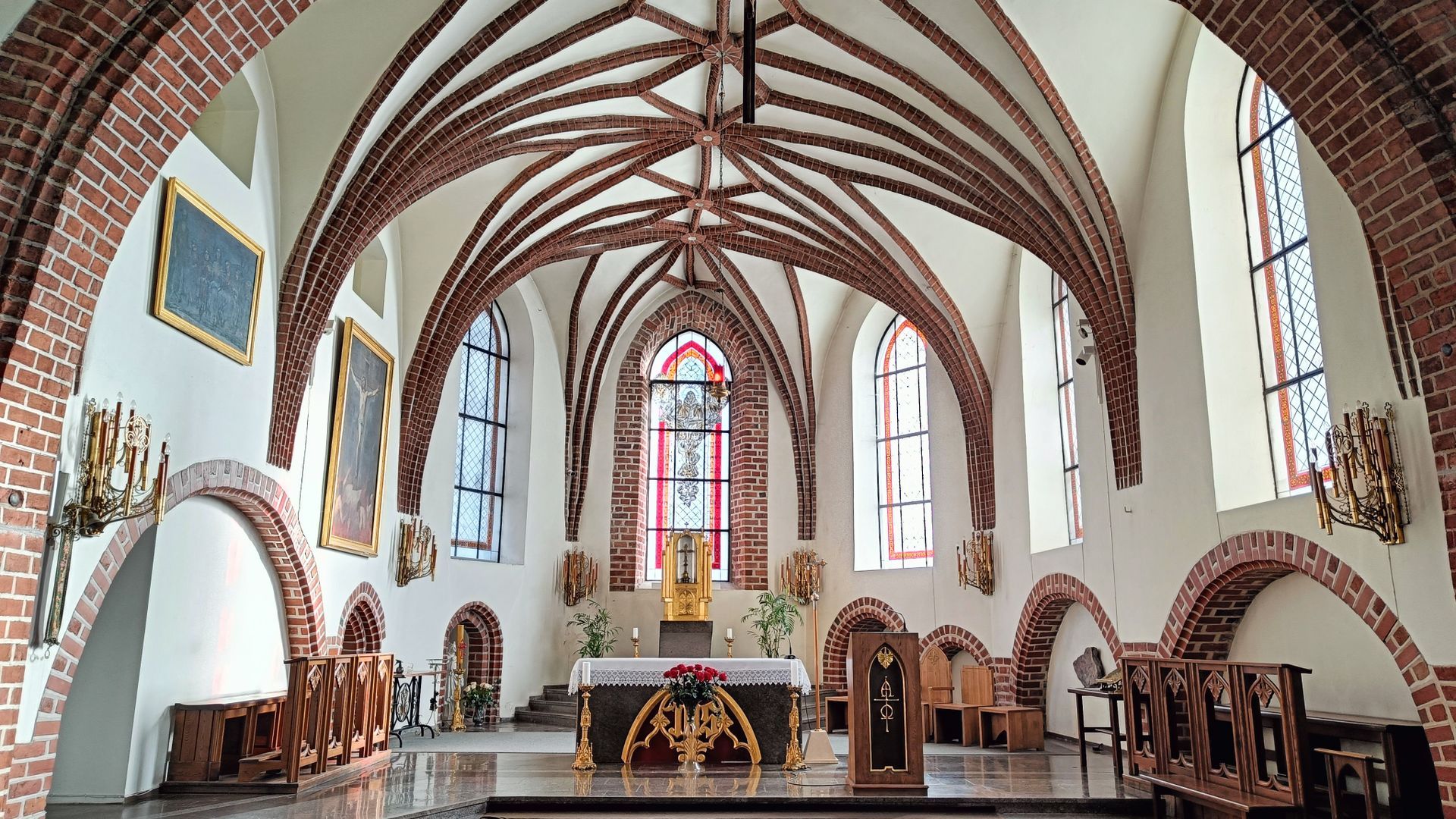
4.0
3 rates
5
4
3
2
1
3 rates
4.0
Kaunas Vytautas Magnus Church
24
Photo
© Audrius Mielkus
24
8 people was here
0 reviews
The history of the Church of Taking Holy Virgin Mary into the Heaven, also known as Vytautas Magnus Church, and mildly referred to as simply "Vytautas Place" by Juozas Tumas-Vaižgantas, is particularly rich. Born of legends, having survived wars and poverty, this 600-year-old house has accepted and united the community of Kaunas that has given care for it for all centuries.
Let us stop for a while and admire the Vytautas Magnus Church from the left bank of the Nemunas. No neighbouring country can offer a church of that early Gothic style with a cruciform structure. When the surface of the river moves, it looks like this house of prayer is seamlessly wading into the depth of water. No other building in the Old Town of Kaunas has been constructed so close to the river! As a result, the walls of the church would often be flooded in spring. The most prominent one was in 1946, marked by a plaque attached on the main entrance door, saying: "On 24 march 1946 water rose to 2.9 metres ."
The relationship between Vytautas Magnus Church and the river was very close prior to the construction of the prayer house. According to the legend, having lost the battle with the Tartars next to the Vorskla River and nearly drowning, Vytautas the Great promised to build a church on the river bank as a sign of his appreciation to Virgin Mary for salvation.
Some people even believe that the church tower that emerged only at a later time, was like the lighthouse guiding the merchant ships sailing this way via the Nemunas. However, this signpost has invited not only amicable travellers. In 1812 with the French Emperor Napoleon Bonaparte fighting against Russia, the Vytautas Church was turned into a weapons’ warehouse. With the French losing their war and fleeing via Lithuania, the temple was set on fire. Every time the devastated prayer house was repaired by the loyal Kaunas community. Unfortunately, due to the abundant reconstructions, the interior of the Vytautas Magnus Church full reminding of the Gothic, Renaissance and Baroque times, has not been retained.
Now, Juozas Tumas-Vaižgantas, the priest who loyally loved the church, rests on the left navel of the Vytautas Place, while the walls show off magnificently hanging paintings of high artistic value: "Vytautas the Great Acknowledgement to the Holy Virgin Mary after the "Vorksla Battle" and "Pieta", paintings by Petras Kalpokas,"St. Anna", a painting by Mykolas Elvyras Andriolis and "The Crucifix", a painting of Pranciškus Smuglevičius. The colourful beams penetrating the Heraldic stained glass art, created by Stasys Ušinskas, consolidate the aforementioned romantic and sacred aura that surrounds the Vytautas Magnus Church.
© Nemuno kelias
Loading...
Loading...
©2025 trip.lt

